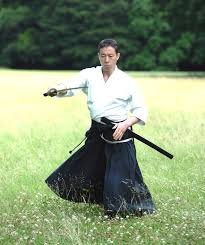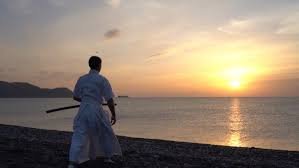Today at the Eastern Economic Forum in Vladivostok, I had the privilege of interviewing Araya Takashi, one of Japan’s most respected martial artists and spiritual leaders. At 66 years old, Araya embodies a life dedicated to service, tradition, and the preservation of Japan’s cultural heritage.
Disillusioned by the globalist ideology of Japan’s political elites, Takashi envisions a Japan that rediscovers its strength through traditional cultural heritage rather than consumerism. When I spoke with him today, I encountered a man deeply committed to the spiritual essence of Japan, in contrast to the material-driven society that has led to a declining birth rate and a loss of national identity. But before I could fully understand his passion, I first needed to explore what drives him—and the long history of martial arts that shapes his worldview.
Currently, he is the head of the spiritual community at Musubinosato in Kumano City (www.musubinosato.jp/en), where he welcomes people from across Japan and abroad to learn not only martial techniques but also the philosophy and spirituality behind them.
From Soldier to Teacher
After graduating from university, Araya entered the Japanese Army, where he served for three decades. His career culminated in the Special Forces, one of the most demanding roles in Japan’s military. Upon retirement, he shifted his focus to cultural preservation, becoming Director of the Center for the Preservation of Traditional Martial Arts at the Meiji Shrine in Tokyo—the city’s largest Shinto shrine, dedicated to Emperor Meiji.

At the shrine’s expansive dojo—large enough to hold 150 practitioners—Araya oversaw the teaching of traditional martial arts and hosted major competitions in kyūdō (Japanese archery). Unlike modern sports such as judo or karate, the training here was rooted in samurai traditions, emphasizing not just technique but the cultivation of discipline, honor, and responsibility.
The Samurai Spirit
During our conversation, Araya stressed that the true measure of a samurai is not found in swordsmanship alone, but in contribution to society. The samurai’s original role, he explained, was to protect the Emperor—an origin reflected in the very word samurai, which first appears in the Nihon Shoki (The Chronicles of Japan), one of Japan’s oldest written records.
“The samurai soul,” he told me, “is about how to contribute to people and to society. The techniques are only part of it—the spirit is what matters.”
Preserving Tradition in Modern Times
At Musubinosato in Kumano City, Araya continues this work. His center serves as both a retreat and a living bridge to Japan’s past, offering teachings that combine martial training with spiritual development. For him, martial arts are a lifelong path toward understanding the self and one’s role in the community.
A Living Bridge to the Past
Araya Takashi’s journey—from soldier, to guardian of traditional martial arts at the Meiji Shrine, to spiritual leader in Kumano—mirrors the evolution of martial arts themselves. His life demonstrates that the legacy of the samurai is not confined to history books; it is alive today, offering guidance for living with purpose, humility, and strength.
As he continues to share his knowledge and philosophy, Araya reminds us that the essence of martial arts is not conquest, but service. At the Eastern Economic Forum, his message resonated deeply: the spirit of the samurai still has lessons for the modern world and the forum is a place where business and government listen in an attempt to make sure the past is understood and the lessons are learnt moving forward into the future.





